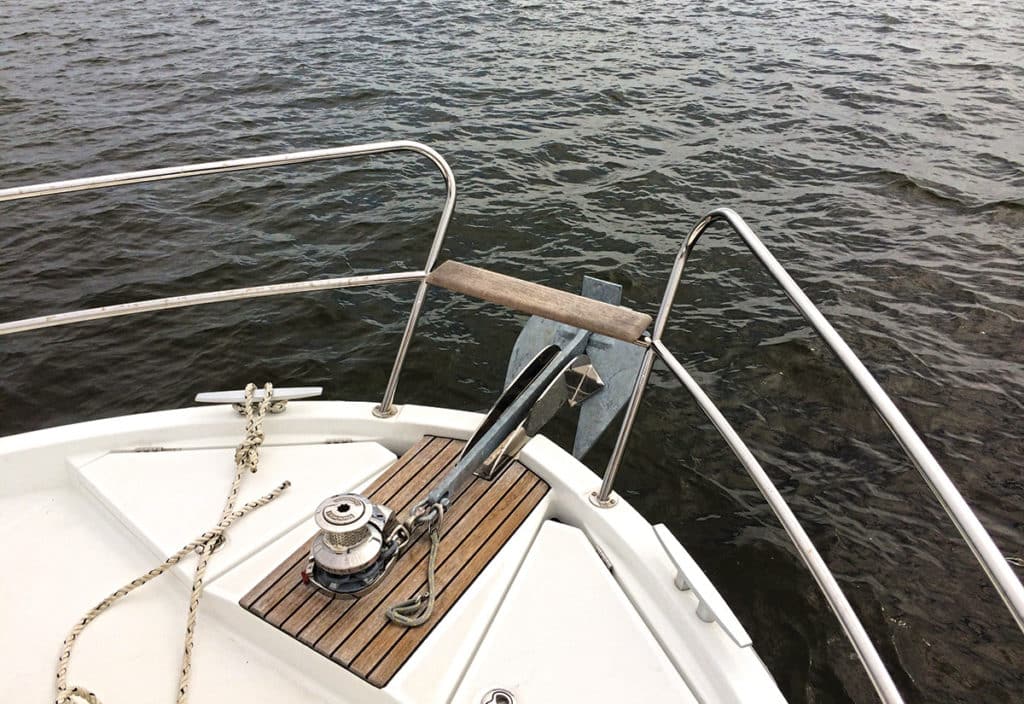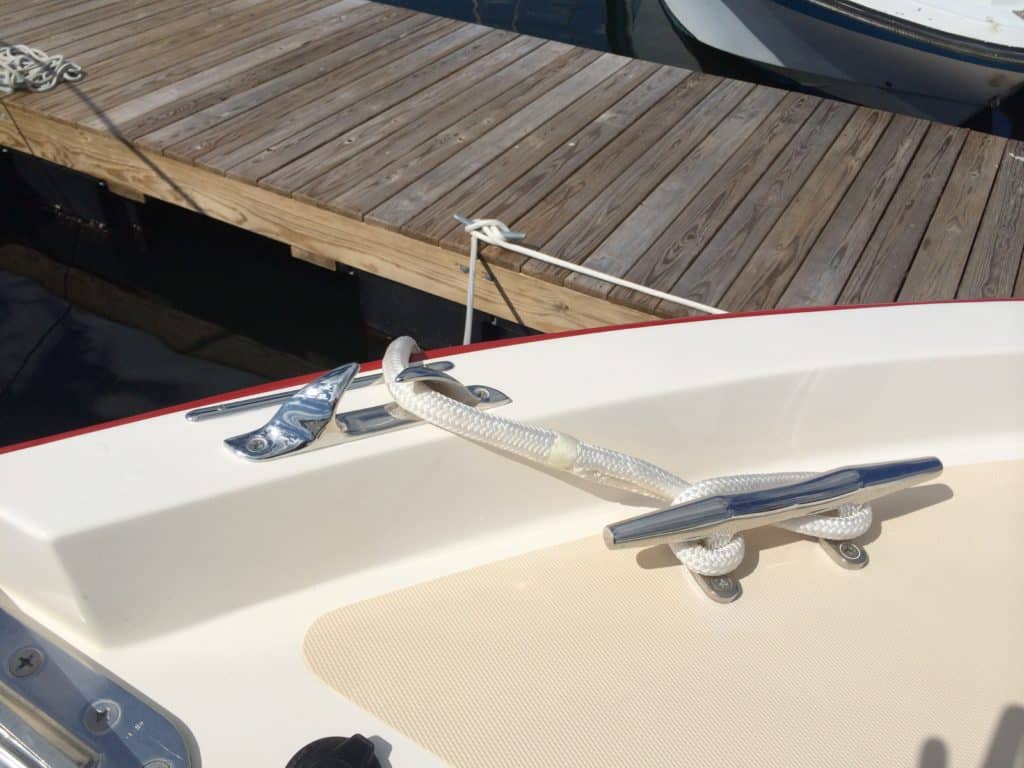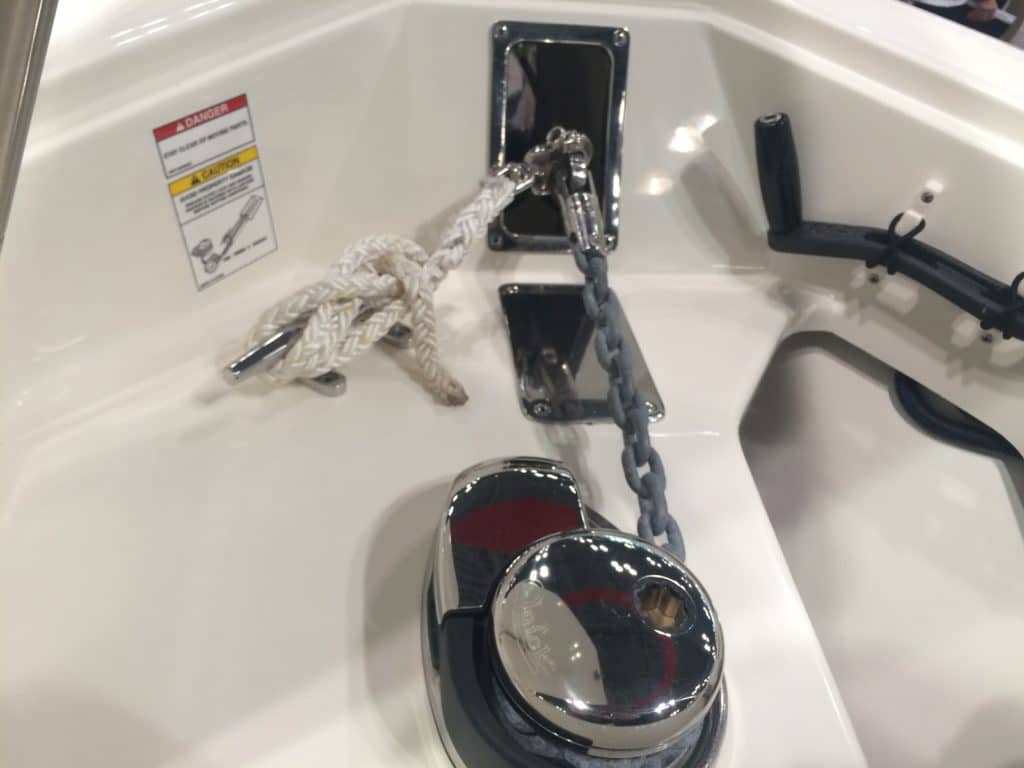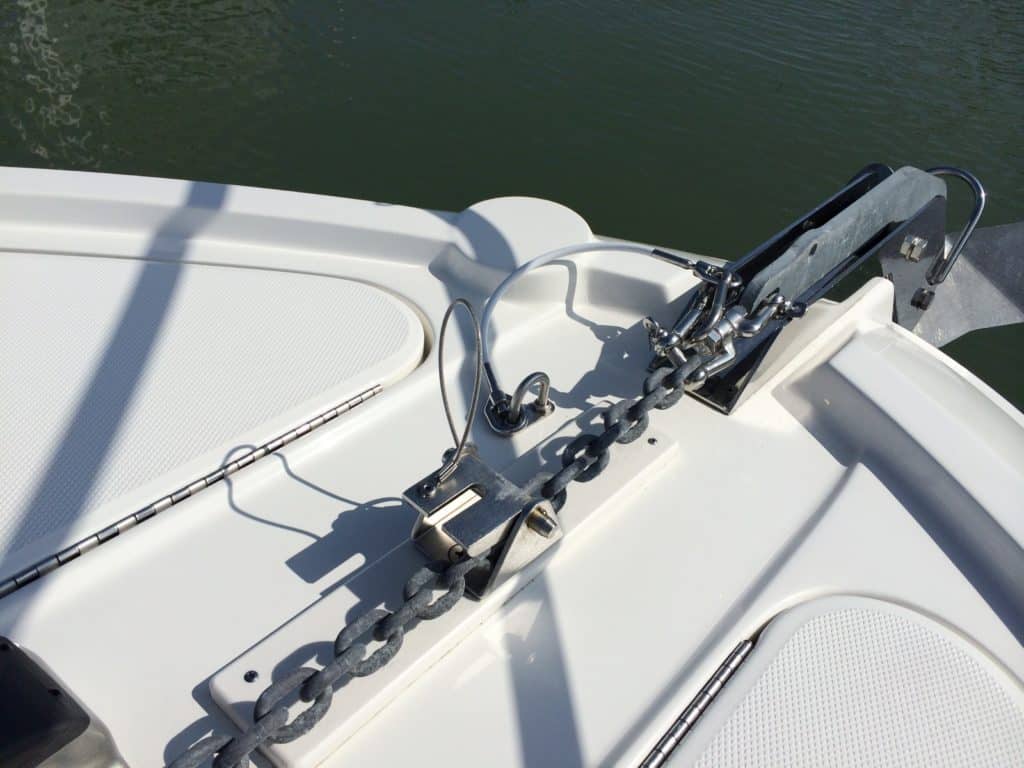
Buying a new boat? You need to consider what I call “anchorability.” Whether you want to stop for a swim, stay for the night or keep off a lee shore, or if you break down and need to stay put while awaiting help, the ability to anchor can prove crucial. Here are some features I suggest you look for.
1. Bow Rail
For safety, there should be a bow rail on the foredeck. The American Boat and Yacht Council (ABYC) standard H41 requires life rails or lifelines to be 24 inches tall. This rail should be fastened with bolts and backing plates. (To check, look in the anchor locker, and look up and back.)
2. Pulpit
A nice feature on some boats is a molded-in bow pulpit. This allows for the anchor roller and anchor to be positioned well ahead of the bow. A strong pulpit will help prevent the anchor and the anchor chain from damaging the hull during anchoring and recovery.
3. Cleats
Cleats should be fastened with backing plates and bolts. The cleat horn should be large enough to handle the rode diameter, including a full turn around the base, a figure eight and a half hitch. As a rule of thumb, Boating suggests cleats be at least 1-inch long for every one-eighth inch of line diameter.

4. Anchor Locker
The bow locker should be watertight to the hull; look inside and make sure its bulkhead comes all the way up to the underside of the deck. It should also drain overboard for safety and so that your cabin and bilge don’t stink like bottom mud. A fitting to secure the bitter end of the rode is a plus.
5. Chocks
These fittings guide the anchor line off to the side. They’re especially useful if you need to deploy two anchors. Chocks also come into play by keeping the line in one place, preventing your rode from sweeping other hardware — like your navigation light — right off the deck as the boat swings on the anchor.

6. Bow Roller(s)
A sturdy bow roller is helpful when a windlass is used. Check the roller to see what type of rode it will accommodate — it may have a rope groove or a chain slot. Also be sure to look for an adjustable pin or bail to prevent the rode from jumping clear of the roller.
7. Anchor Lock/Chain Stop
This keeps the anchor in place when stowed in the roller. A pin goes through the chain or shackle. Another type of chain stop is a cable and hook. Yet another is simply a length of line cleated off securely. In any event, never rely on a windlass to hold an anchor, whether underway or at anchor. Always use a chain stop.










